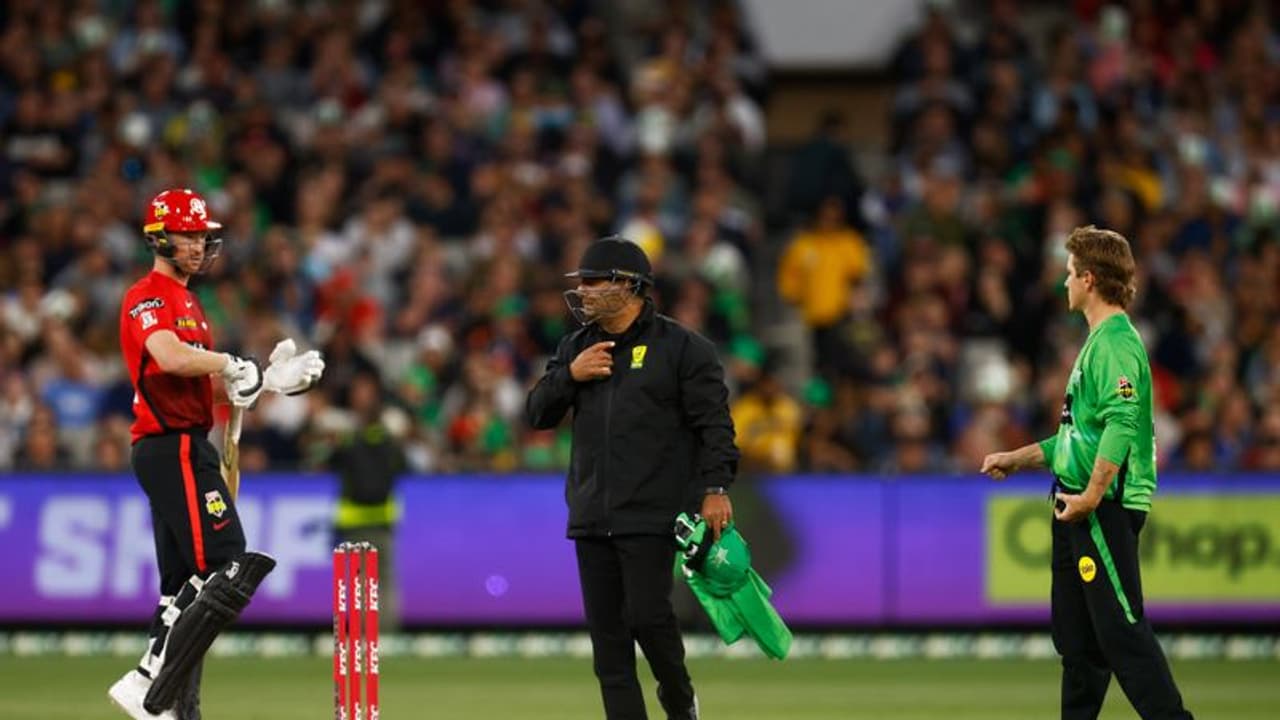There was a controversy during the ongoing BBL when Adam Zampa attempted to run the non-striker out for backing up after completing his bowling action. On the same note, the MCC has made another adjustment to the law.
On Thursday, the Marylebone Cricket Club (MCC) recognised some vagueness in the rule regarding running a batter out at the non-striker's end for backing up, besides adding that it was changing the law's wording to withdraw all chaos. The wording change comes weeks following the incident involving Australian spinner Adam Zampa during the Big Bash League (BBL) 2022-23. The Melbourne Stars captain had attempted to provoke a 'Mankad' dismissal versus rival Melbourne Renegades batter Tom Rogers. However, Zampa was stumped by the television (TV) umpire, much to his embarrassment. As the 30-year-old completed his follow-through when he was about to release the delivery to on-strike batter Mackenzie Harvey, he stopped to dislodge Rogers' bails, signalling to the umpire to do the needful.

However, undisturbed by Zampa's call, the umpire referred it to the TV umpire, who oversaw that Zampa's arm was past the 'vertical' or the loftiest point, from where the ball is thought to have been released. On Thursday, the MCC sent a statement on the BBL incident, stating that the umpires had made the right call. The MCC, however, added that the equivocation in the law's language might have led to the disorder.
ALSO READ: Hashim Amla announces retirement from professional cricket; social media hails incredible career
"We acknowledge that while this Law has generally been understood well by players and umpires, there needs to be more clarity in the wording, which could lead to confusion. MCC has therefore moved to change the wording of Law 38.3 to deliver better clarity," MCC's statement read.
"The current wording led some to think that if the non-striker left their ground before the expected moment of release, then the run out could happen at any moment, even after the bowler had gone through the bowling action. That was never the intention of this Law, nor the way MCC ever interpreted it," added MCC's statement.
ALSO WATCH: IND VS NZ 2022-23, 1ST ODI: 'THIS KNOCK MEANS A LOT TO ME' - GILL AFTER BECOMING 5TH INDIAN TO SCORE 200
"It is important to note that this does not change the way the Law should be interpreted -- it has been interpreted that way for the past six years without much misunderstanding. However, the intention is that this [wording change] will make things clearer," the statement continued.
The new law reads: "38.3.1 At any time from the moment the ball comes into play until the instant when the bowler would normally have been expected to release the ball, the non-striker is liable to be run out if they are out of their ground. In these circumstances, the non-striker will be out run out if they are out of their ground when their wicket is put down by the bowler throwing the ball at the stumps or by the bowler's hand holding the ball, whether or not the ball is subsequently delivered."
"38.3.1.1 The instant, when the bowler would normally have been expected to release the ball, is defined as the moment the bowler's arm reaches the highest point of their regular bowling action in the delivery swing," the law attests. The new regulation comes into force immediately, conveyed the MCC.
"38.3.1.2 Even if the non-striker had left his/her ground before the instant at which the bowler would normally have been expected to release the ball, once the bowler has reached that point, it is no longer possible for the bowler to run out, the non-striker under this Law," concluded the law.
